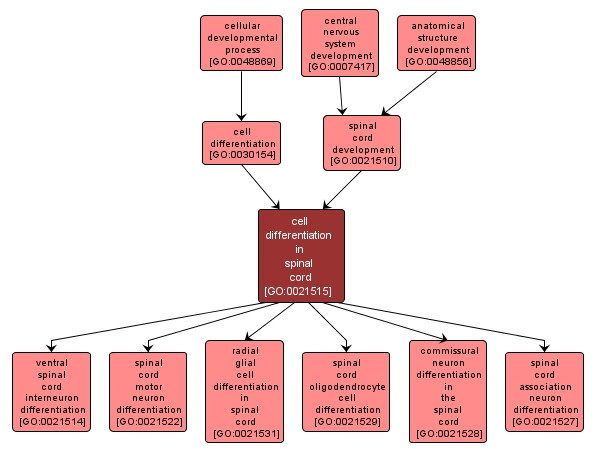GO TERM SUMMARY
|
| Name: |
cell differentiation in spinal cord |
| Acc: |
GO:0021515 |
| Aspect: |
Biological Process |
| Desc: |
The process whereby relatively unspecialized cells acquire specialized structural and/or functional features that characterize the cells of the spinal cord. Differentiation includes the processes involved in commitment of a cell to a specific fate. |
|

|
INTERACTIVE GO GRAPH
|














